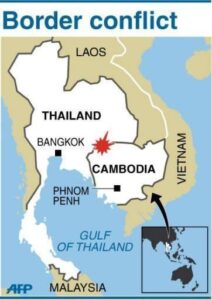India-China relations and their impact on geopolitics
Introduction
China’s announcement of its ambitious plan to build the world’s largest hydropower dam on the Yarlung Tsangpo River (Brahmaputra) in Tibet has drawn global attention and concerns. The mega-project, a part of China’s 14th Five-Year Plan, is expected to produce a staggering 300 billion kWh of electricity annually—three times the capacity of the current record-holder, the Three Gorges Dam. However, this development raises significant environmental, geopolitical, and humanitarian challenges, particularly for India and Bangladesh, the downstream riparian states.

Key Highlights of the Project
Location and Scale:
The dam is proposed in the Medog region of Tibet on the eastern rim of the Tibetan plateau. This region is geologically sensitive, prone to high seismic activity, and is part of the fragile Himalayan ecosystem.Energy Capacity:
The project aims to generate 300 billion kWh of electricity annually, significantly boosting China’s renewable energy capacity.Project Cost:
Estimated at $137 billion, this dam is poised to be the world’s largest infrastructure project.Impact on Population:
While no official displacement figures have been shared, the scale suggests that resettlement challenges may surpass those seen during the construction of the Three Gorges Dam, which displaced 1.4 million people.
Concerns Raised by India
Environmental Concerns
Ecological Fragility:
The proposed site is within the Himalayan region, which is ecologically sensitive and home to unique biodiversity. Altering the flow of the Brahmaputra could severely impact local flora and fauna.Geological Risks:
Being in a high seismic zone, the dam’s construction could exacerbate earthquake risks, potentially leading to catastrophic failures.Downstream Impact:
The dam may disrupt water flow, leading to irregularities in the river’s course and seasonal flooding or droughts in Assam and Arunachal Pradesh.
Geopolitical and Strategic Implications
Water Security:
As a lower riparian state, India has expressed concerns about potential water diversion that could harm its agricultural and industrial sectors.Geopolitical Tensions:
The dam amplifies fears of “water wars,” with the possibility of China using water as a tool of geopolitical leverage during conflicts.Transparency Issues:
India has consistently sought clarity and consultation regarding China’s hydropower projects. Beijing’s lack of disclosure on this project has heightened mistrust.
Humanitarian Concerns
The project could lead to mass displacement in Tibet and have downstream impacts on millions in India and Bangladesh, disrupting livelihoods and agriculture.
India’s Response
Diplomatic Engagement:
India has urged Beijing to maintain transparency and uphold its commitments under the Expert Level Mechanism (ELM) established in 2006. This mechanism allows for sharing hydrological data during flood seasons, which India uses to prepare for potential disasters.Legal and Ethical Standpoint:
India reiterated its established user rights over Brahmaputra waters and emphasized the need for China to consult downstream nations.Development of Countermeasures:
India is accelerating its own hydropower projects in Arunachal Pradesh to balance the strategic implications of China’s actions.International Advocacy:
New Delhi is likely to engage with other nations, especially Bangladesh, to build a coalition that ensures fair water-sharing practices.
The Broader Context
The Brahmaputra, one of Asia’s major rivers, originates in Tibet, flows through India’s northeastern states, and finally merges with the Bay of Bengal in Bangladesh. Its waters are vital for agriculture, fisheries, and hydropower in the region. Altering its natural flow would not only impact India but also have far-reaching consequences for South Asia’s geopolitical stability.
Future Challenges
Climate Change:
Changes in glacier melt and precipitation patterns due to global warming could exacerbate the project’s impact.Regional Collaboration:
Strengthening trilateral cooperation between India, China, and Bangladesh could mitigate potential conflicts, but achieving this remains a diplomatic challenge.
Conclusion
While China’s proposed dam on the Brahmaputra showcases its technological and infrastructural ambitions, the project raises critical concerns for the environment, geopolitics, and regional stability. As India navigates these challenges, it must strike a balance between diplomacy, strategic preparedness, and sustainable development. Collaborative efforts at regional and international levels are essential to ensure equitable and environmentally sound solutions to shared water resources.






